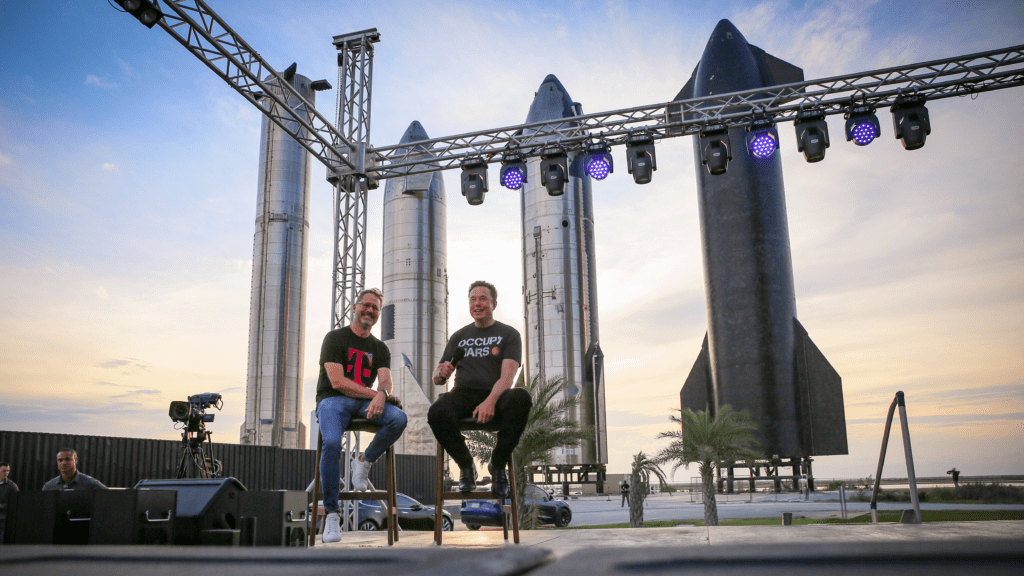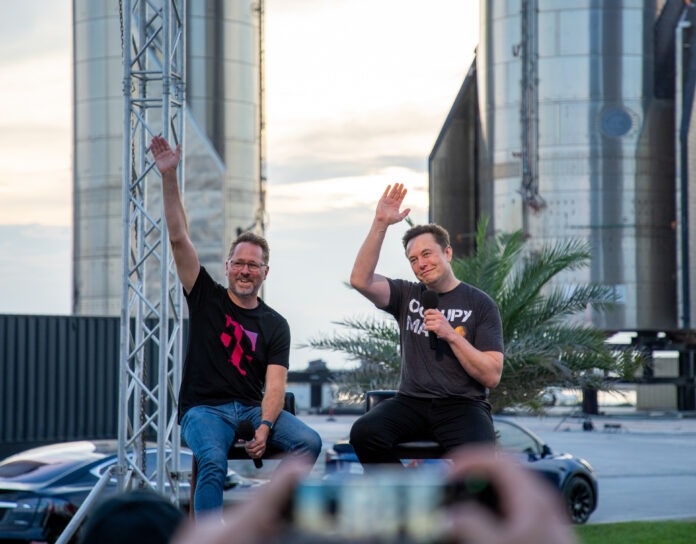SpaceX Chief Engineer Elon Musk and T-Mobile CEO and President Mike Sievert presented “Coverage Above and Beyond,” a breakthrough new plan to bring mobile phone connectivity everywhere.
During a live event, Musk and Sievert announced that SpaceX satellites would connect directly to T-Mobile phones to provide network connectivity to the most isolated parts of the world, beyond the reach of cell phone base stations.
The “Coverage Above and Beyond” project, which will use SpaceX’s thousands of Starlink satellites already in orbit, will initially enable texting from late 2023, while voice services will follow.
The promising project
“We’ve always thought differently about what it means to keep customers connected, and that’s why we’re working with the best to deliver coverage above and beyond anything customers have ever seen before,” said Mike Sievert, CEO of T-Mobile. “More than just a groundbreaking alliance, this represents two industry-shaking innovators challenging the old ways of doing things to create something entirely new that will further connect customers and scare competitors.”
“The important thing about this is that it means there are no dead zones anywhere in the world for your cell phone,” said SpaceX Chief Engineer Elon Musk. “We’re incredibly excited to do this with T-Mobile.”

The service “will save lives,” Musk said, using as an example lost hikers who are currently unable to call for help. T-Mobile CEO Mike Siewert believes the service will be included for free with most existing plans, but there may be a charge on the cheapest plans.
Although satellite internet access has been around for several years, users require specialized equipment such as Starlink terminals.
No extra equipment
According to the two companies, the “Coverage Above and Beyond” project aims to work with the phone users already have in their pockets. Most smartphones already on T-Mobile’s network will be compatible with the new service using the device’s existing radio, so the user will not need to buy any extra equipment.
The service will initially be offered to customers in the United States, but T-Mobile plans to expand it to other markets in the future, Sievert said. “It’s like putting a cell phone antenna in the sky, but much more complicated,” he explained.
Text messaging, including SMS, MMS, and participating messaging apps, will empower customers to stay connected and share experiences nearly everywhere. As pointed out by T-Mobile, with this technology, the company is planning to give customers text coverage practically everywhere in the continental US, Hawaii, parts of Alaska, Puerto Rico, and territorial waters, even outside the signal of T-Mobile’s network, starting with a beta in select areas by the end of next year after SpaceX’s planned satellite launches. Afterward, the companies plan to pursue the addition of voice and data coverage.
Competition in the satellite internet access market is intensifying rapidly. Amazon founder Jeff Bezos recently announced plans to launch about 3,200 satellites. China plans to deploy a constellation of 13,000 satellites called Guowang, while the European Union wants to launch about 250 by 2024.



